Data Mapping Snowflake to Salesforce with DataTools Pro
Data mapping Snowflake to Salesforce objects is often referred to as reverse ETL. The concept is data warehouse and analytical processes produce data that is valuable to your customer relationship management.
If you are using Snowflake to facilitate a data migration or performing regular data movement from Snowflake to Salesforce, keeping track of mapping should follow a rigid process.
Connect your Snowflake Meta-data to DataTools Pro
To connect DataTools Pro to your Snowflake account, you will need to use Oauth tokens. Please view our Snowflake setup documentation for detailed steps. In this tutorial we, assume you have completed this step and have the correct tokens and access available.
- Acquire your Snowflake account and generate Oath tokens
- Login to DataTools Pro
- Go to Settings
- Click Snowflake integration
- Enter your Account and Oath credentials.
- Click Connect
- Grant access from your Oauth credentials to your Snowflake instane

Navigate your Snowflake Databases and Schemas
From the Snowflake settings screen in DataTools Pro
- Click on the “Databases” icon

2. Select the Schema you would like to view
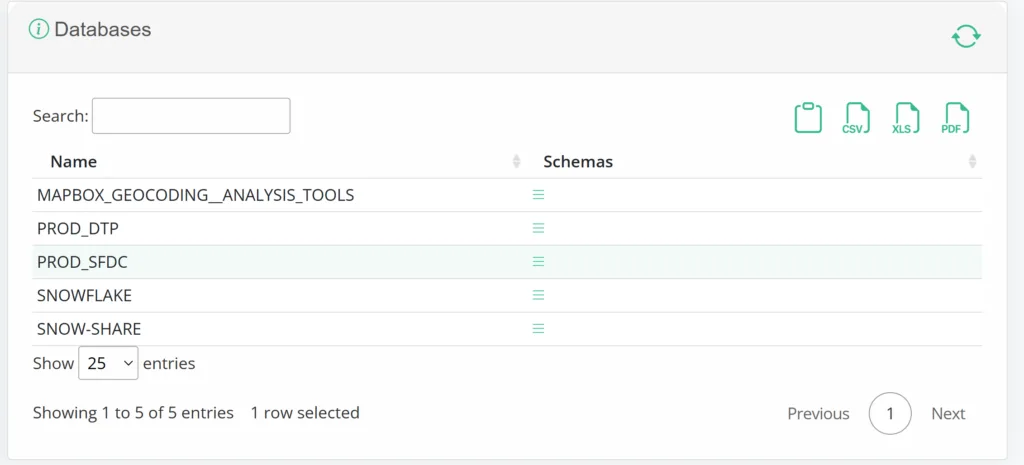
3. Select the Table within the schema
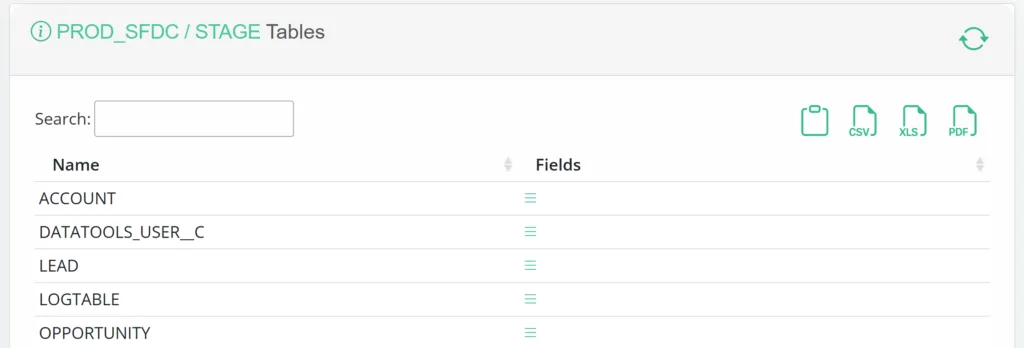
4. Drill into the Table to view fields
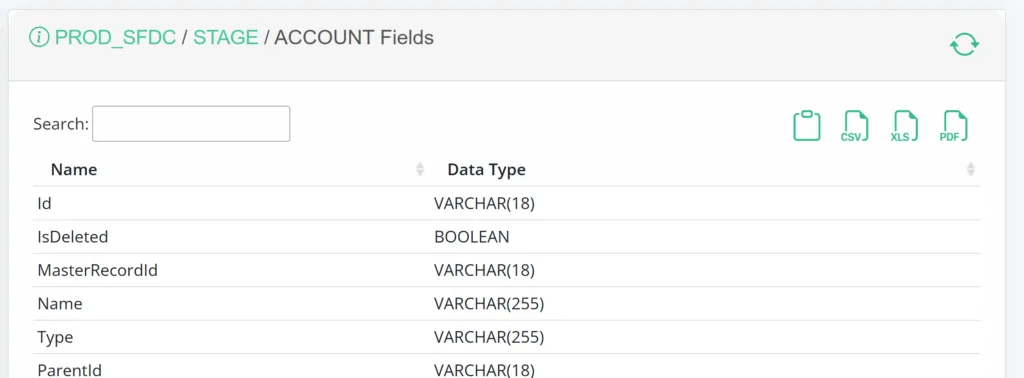
Data Mapping Snowflake to Salesforce
Our team built DataTools Pro after spending hundreds of hours mapping data migrations, ETL, and reverse ETP jobs in Excel. Learn how to configure your own Salesforce data mapping tool which can also help you document your data dictionary.
From within the DataTools Pro migration tab
1. Select Snowflake Source Data
2. Click the “Get from Snowflake” link
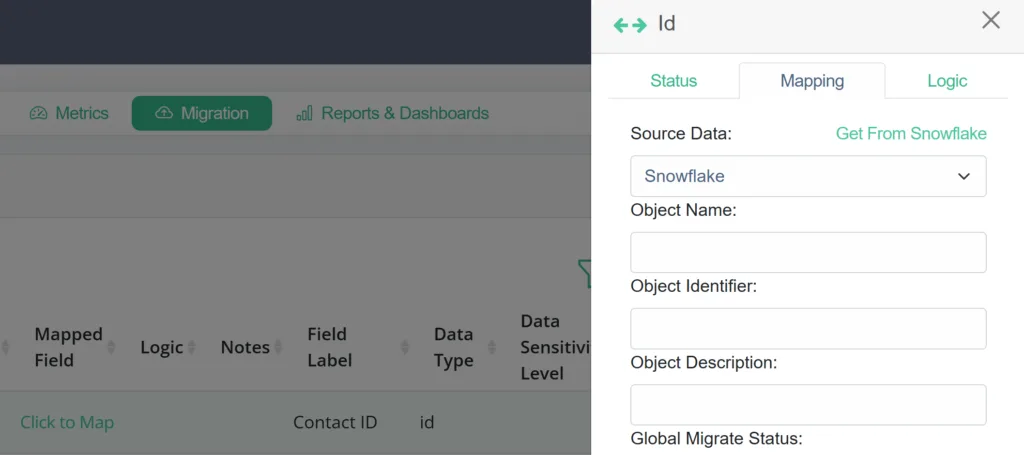
3. Select the saved Snowflake instance configured in DataTools Pro settings
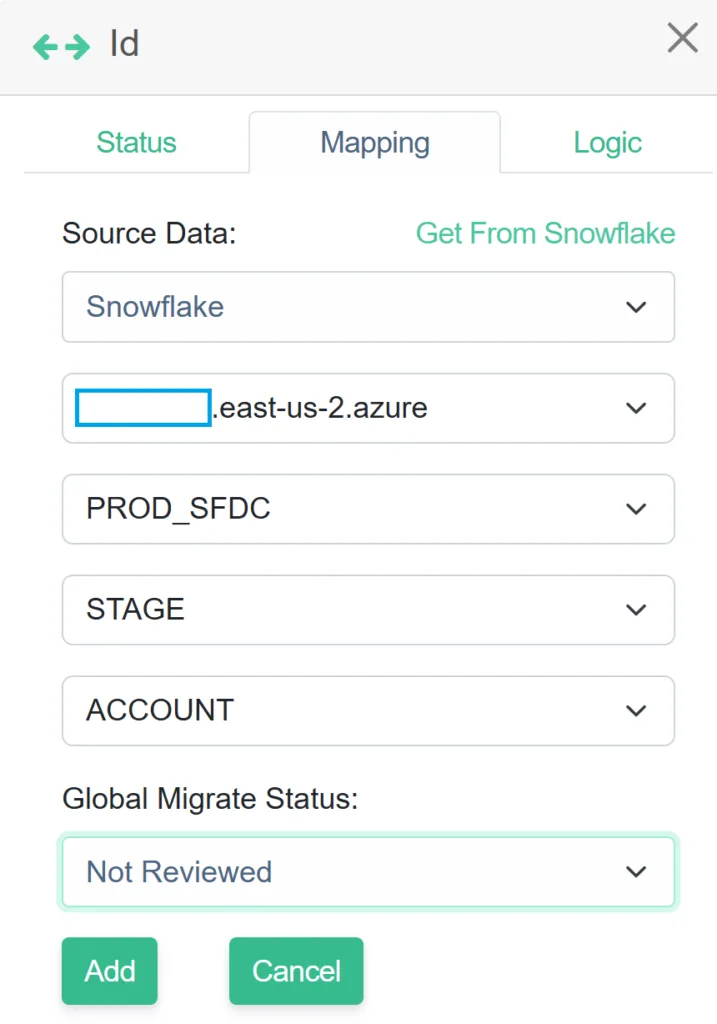
4. Set the global migrate status for this object so as you map fields DataTools Pro can automatically set a status for the field you map from Snowflake to Salesforce.
DataTools Pro will import the schema from Snowflake and give you an opportuinty to quickly fine tune.
5. Auto-match fields to Salesforce when the name is the same (case insensitive process).
6. Click Save
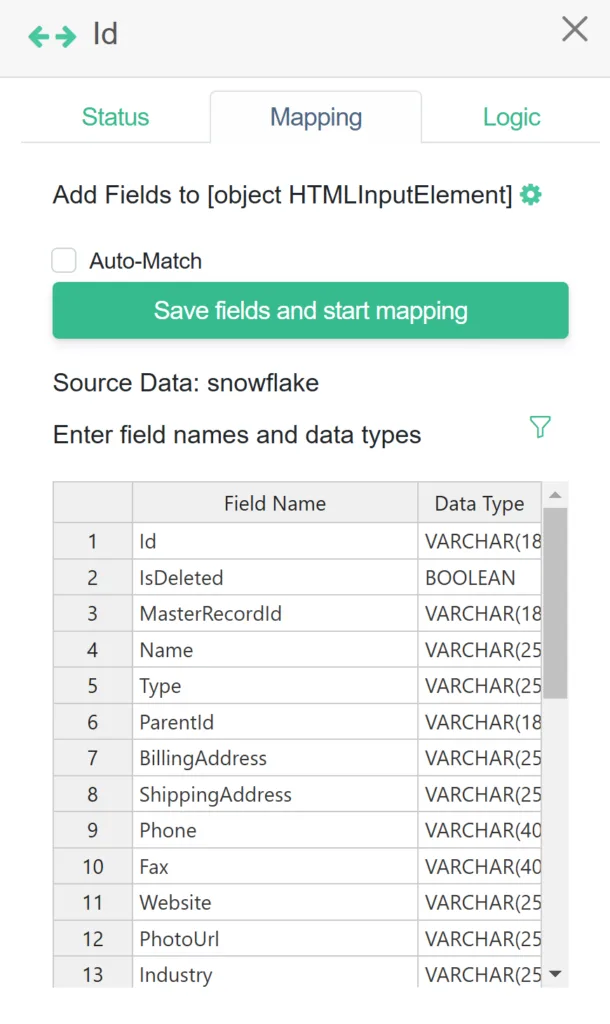
Additional Tutorials: Data Mapping & Migration
Your meta data is now imported to use with DataTools migration and data mapping features

